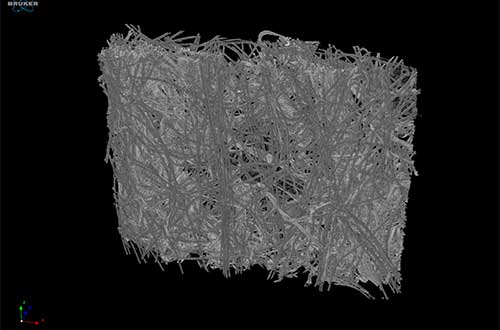
Researchers are developing novel biological, biochemical and thermochemical approaches to efficient biomass conversion for value-added products including forest products and pulp and paper and their effective utilization.
Challenges being addressed
Alternative Applications for Forest Biomass
Finding improved uses for forest-based materials and biomass.
Biobased Adhesive from Residues of Biorefineries
Modifying lignin (residue from cellulosic biofuels) for use as heat-cured adhesives to replace fossil-based adhesives.
Biodegradable Lignin-based Plastics
Developing biodegradable plastics using lignin from biomass substituting polystyrene from petroleum.
Biodegradable Surfmers for Commercial Emulsion Systems
Developing biobased surfmers, a reactive surfactants, as emulsifiers for the emulsion polymerization of latex products to eliminate the loss in performance suffered by these products due to surfactant migration and surface enrichment.
Bioenergy Supply Chain Policy Outcomes
Assessing state-level energy policy effectiveness across the bioenergy supply chain (extraction, conversion, and generation).
Biology of Fungal Decomposition
Understanding fundamental mechanisms of fungal decomposition and their applications to sustainable energy.
Cogeneration in Forest Products Industry
Evaluate wood biomass-based cogeneration technologies for U.S. hardwood products manufacturers, and their effectiveness in improving the industry’s energy-efficiency and environmental performance.
Cross Laminated Timber and Thermally Modified Wood as Value Added Forest Products
Development, adoption and implementation of the use of Cross Laminated Timber (CLT) and thermally modified wood as valued forest products in the U.S.
Development of High Biomass Content Coatings and Adhesives
Developing new monomers and synthesis techniques to incorporate renewable biomass into coating and adhesive formulations.
Fundamentals and Applications of Photosynthetic Microorganisms
Researching physiological enhancement to photosynthesis and carbon uptake in photosynthetic microorganisms.
Fundamental transport and reaction kinetics analysis using 3D structure of biorenewable resources
Using 3D structure of plant cell wall ultrastructure, we are exploring a fundamental transport and reaction kinetics-based approach to better understand the structural and topochemical evolution during biomass conversion. This will help develop more efficient, sustainable biomass conversion technologies.
Lignin Utilization as Filler and Co-polymer in Biodegradable Plastics
Developing lignin based polymers and co-polymers with biopolymers such as PLA as biodegradable plastics.
Nanofibrillation of Cellulose and Wood Biomass
Developing and applying high surface area cellulose nanofibers from woody biomass.
Non-wood Fiber Utilization for Paper Manufacturing
Exploring multiple conversion approaches using agricultural residues such as cereal straw, flax straw, corn stover, hemp for alternative papermaking fiber applications.
Northwest Advanced Renewables Alliance
Exploring questions such as: can cellulosic biofuels meet carbon emissions reduction targets of renewable energy policies economically?
Novel Biocatalysis Approaches for Biofuels and Value-added Bioproducts
Characterizing enzymes from model bacteria that produce high-value oils or waxes to better determine ways to produce specific products such as biodiesel.
Novel Biorefining Approaches
Converting biomass to fuels, heat, materials and chemicals through innovative mechanical, biological, and thermochemical processes.
Novel Cellulosic Bioactive Materials and Applications
Developing bioactive cellulosic materials for bioprocessing, bio-based polymers and composite materials, and carbonized structures for electronic applications.
Sensing and Computer Applications in the Production of Switchgrass as Energy Crop
Studying on-site specific weed management for switchgrass establishment by detecting weeds using machine vision and hyperspectral analysis.
Structure-property-performance functional relationships in paper, biocomposites, and biorenewable materials
We are exploring how the internal 3D structure of biomaterials affect their mechanical, transport and optical properties, manufacturing efficiency, and performance during end-use applications.
Value-added Bioproducts from Agricultural Residues and Waste Materials
Effective bioconversion of agricultural residues and dairy manure into value-added bioproducts such as lipids and biogas.
Waste Not: Closing the Loop on Organics Wastes
Identifying and valuing organic wastes across the food production, processing and distribution system.